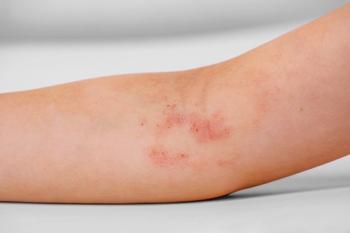
What the Numbers Suggest - and What They Mean
ABSTRACT: Practicing pediatricians make many clinical decisions each day in the courseof patient care. For each decision, risks and benefits must be weighed. It is important,therefore, to be able to understand different measures of increased or decreased risk.It is also important to be able to talk with patients and their parents about risk. Thisreview of various ways of expressing risk is offered with the goal of making it easierfor pediatricians to incorporate measures of risk into clinical decision making.
Many parents-and probably many pediatricians-were likely alarmed to learn from this recent newswire that the risk of seizures was doubled among children who received the combined measles-mumps-rubella-varicella (MMRV) vaccine compared with those who received the measles-mumps- rubella (MMR) vaccine and a separate varicella (V) vaccine. At face value, a doubling of risk appears very substantial and intuitively seems to represent an increase that must be important. However, to grasp the clinical significance of this increased risk requires more information, and the counterintuitive truth is that the increase in the risk of seizures with the combined vaccine is low (5 additional seizures for every 10,000 doses administered).
The foregoing example is just one of many instances in which a good understanding of how risk is measured and expressed-and an ability to communicate that information to patients and parents-can be a valuable asset in a pediatric practice. In this article, we review concepts of medical risk. In a future article, we will present an approach to explaining these concepts to patients and parents.
DEFINITION OF RISK
Risk is the probability that an adverse outcome will occur; it is often estimated from the observed rate of the adverse event, expressed as a ratio. The magnitude of a risk thus depends on both the number of instances of the adverse event and the number of persons exposed. In the ratio that expresses the risk of seizures with the MMRV vaccine, for example, the first term is the number of children who experienced a febrile seizure and the second term is the number of children who received the vaccine. In most cases, risk is measured over some defined time frame; it is therefore a measure of incidence (as opposed to prevalence). In this particular instance, the defined time frame was the 7 to 10 days after vaccination-which "makes sense" since the vaccines involved are live vaccines that are known to cause other reactions, such as rash and fever, within this same interval.
WAYS TO EXPRESS DIFFERENCES IN RISK
Relative risk. Differences in risk can be expressed in several ways. One simple way is by dividing the risk in one group by the risk in another group. This ratio of the 2 risks is called a relative risk. A relative risk of greater than 1.0 denotes an increase in risk, whereas a relative risk of less than 1.0 denotes a reduction in risk. The doubling of risk referred to in the newswire above regarding the MMRV vaccine was an expression of relative risk. It was calculated by dividing the risk of febrile seizure in children who received the MMRV vaccine by the risk of febrile seizure in children who received the MMR and V vaccines separately.
Attributable risk. A second and very direct way to express a difference in risk is to measure the absolute difference between 2 risks. In the case of the MMRV vaccine versus separate MMR and V vaccines, the absolute difference in risk is calculated by subtracting the lower risk of febrile seizure in the separate MMR and V group from the higher risk in the combination MMRV group. Sometimes called the attributable risk, this way of expressing a difference in risk shows the size of the additional risk of an outcome that results from the exposure in question.
Number needed to harm. A third way to express a difference in risk is to calculate how many people, on average, would have to be exposed to an intervention associated with increased risk in order for one person to experience the consequence of concern. In our vaccine example, this means determining how many children would have to be immunized with the combined MMRV vaccine instead of the separate vaccines for 1 additional child to experience a febrile seizure. This is determined by taking the inverse of the attributable risk. Risk expressed in this manner is called the number needed to harm.
Table 1 shows the rates of febrile seizure in the 2 populations we have been discussing as reported by the CDC, along with different measures of risk calculated from these data.1 Of 43,353 children who received the combination MMRV vaccine, 40 experienced a seizure, compared with only 128 of more than 300,000 children who received separate MMR and V vaccines. The ratio of these 2 risks yields a relative risk of 2.25. The baseline risk of febrile seizure was quite low, however; thus, the risk of febrile seizure attributable to using the combination vaccine instead of separate vaccines is only 5 additional seizures in 10,000 doses, and the number needed to harm is 2000.
Table 1
Odds ratios, confidence intervals, and other measures. Clinicians may encounter other measures of risk in research articles. An odds ratio is often calculated in retrospective studies in which cases and controls are selected and the rates of ex-posure to a particular risk factor are compared. Results of complex statistical models may also be reported as odds ratios or hazard ratios. In most cases, the reader can treat odds ratios and hazard ratios as rough approximations of relative risks.
Relative risks reported in research studies are typically point estimates or "best guesses." A confidence interval provides an idea of the range of possible relative risks that might be expected. A 95% confidence interval indicates that 95% of the time, the "true" relative risk will fall within the specified interval.
When researchers are examining whether there is a difference in the risk of an outcome with 2 exposures, they may report a P value. The P value represents the probability that any difference in risk between the 2 groups, if found, is due solely to chance. By convention, a P value of less than .05 is considered to be statistically significant.
With the statistical model used by the CDC in its investigation of the MMRV vaccine, an increased relative risk of febrile seizures was reported with the MMRV vaccine (compared with separate MMR and V vaccines). This was estimated by an adjusted odds ratio of 2.25, with a 95% confidence interval of 1.6 to 3.2 and a P value of less than .0001.2 From these data we can conclude that the risk of febrile seizure with the MMRV vaccine is almost certainly increased, since the probability that this apparent relationship is due solely to chance is less than 1 in 10,000. The best estimate of the magnitude of this increase in risk is that the risk is doubled, but it may be increased as little as 1/? times or as much as 3 times.
INTERPRETING RISK
Interpretation of these different measures of increased risk-in particular, relative risk-is heavily dependent on the magnitude of the baseline risk. Although a doubling of risk may sound like a substantial increase, 2 times a very small number is still a very small number. On the other hand, a 2-fold increase in a fairly common outcome may affect a substantial number of patients. Table 2 shows how the impact of doubling risk depends on the magnitude of the baseline risk. When there is a 2-fold increase in the risk of a rare outcome, that outcome is still rare, whereas if a baseline risk of 10% is doubled, 1 extra case of the outcome will be seen for every 10 patients exposed.
Table 2
Moreover, measures of relative and absolute risk are only part of the equation in decisions about what course of action to recommend to patients (and parents). Any consideration of not doing something (such as not administering a vaccine) because of an associated risk must also include a weighing of the possible adverse effects (or risk) associated with forgoing the intervention. In the example of the MMRV vaccine, the risk of forgoing the intervention is whatever adverse effects are associated with giving the vaccines separately- namely, that the child would be subjected to 1 additional needle stick. In a different example, however, forgoing the MMR vaccine because of a perceived (but undocumented) risk of autism would leave the child unprotected against the 3 infectious diseases covered by the vaccine.
In addition, any determination of the clinical significance of a particular risk must take into account the nature of the outcome in question. A 0.01% absolute increase in the risk of death, for example, would have more clinical import than a 10% increase in the risk of a self-limited rash. Moreover, the relative importance of different outcomes depends on the perspective of the person involved. An experienced pediatrician might view a febrile seizure as harmless to a child's development, and he or she might consider a very low risk of this outcome an acceptable trade-off for the convenience of administering 1 less injection. To a parent, however, a child's febrile seizure may be terrifying. Many parents who have witnessed their child's febrile seizure afterwards experience somatic symptoms and have trouble sleeping.3 Such parents might not feel that the benefit of avoiding an extra shot justified even an extremely small risk of their child's experiencing a febrile seizure.
Dow Jones Newswires (02/27/08)
A federally sponsored study has found that the Merck combination vaccination for measles, mumps, rubella, and chickenpox has been linked to higher incidences of fever-related convulsions in children. Results of the study were presented to the Advisory Committee on Immunization Practices Wednesday. The study examining the effects of ProQuad in children 12 months to 23 months of age found a two times higher rate of seizures in children who received the vaccine than in those who received a shot for chickenpox and a separate shot for the three other diseases. The government vaccination advisory panel said Wednesday it would no longer recommend ProQuad over the other multiple vaccinations, as its one-stick shot was formerly preferred for fewer needlesticks in children.
References:
- Centers for Disease Control and Prevention. Vaccine Safety Datalink (VSD) Project. http:// www.cdc.gov/vaccinesafety/vsd/. Last updated March 17, 2008. Accessed May 22, 2008.
- Centers for Disease Control and Prevention (CDC); Advisory Committee on Immunzation Practices (ACIP). Update: recommendations from the Advisory Committee on Immunization Practices (ACIP) regarding administration of combination MMRV vaccine. MMWR. 2008;57:258-260.
- Balslev T. Parental reactions to a child's first febrile convulsion: a follow-up investigation. Acta Paediatr Scand. 1991;80:466-469.
Newsletter
Access practical, evidence-based guidance to support better care for our youngest patients. Join our email list for the latest clinical updates.














